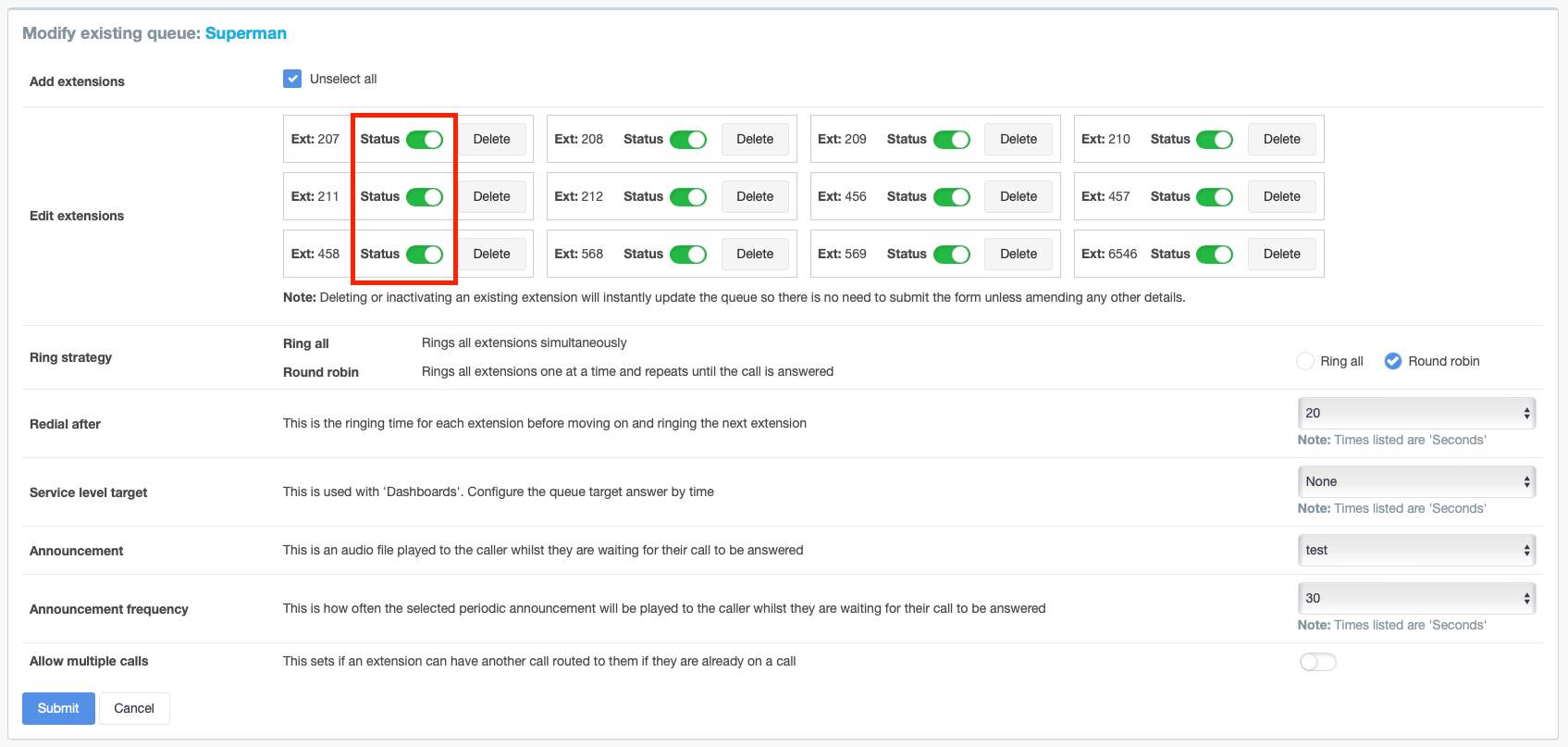How to add and manage your Queues
View extensions associated with a queue
How to toggle the status of an extension within a queue
What is a queue?
A queue is a way of funnelling your incoming calls down a particular pathway. The call handled by a queue will be answered when the resources defined within the queue become available.
Queues are usually set up with common attributes. A greeting message at the start of the queue tells the caller what is happening with their call. Agents or users within your company are associated to the queue. These people will ultimately take the call as they become available. Queues allow the company to distribute calls evenly between agents. Queues can be used to play custom messages to callers and allow you to control the frequency of these messages.
How to add a queue
This guide presumes that you have already created agents within your organisation and allocated extensions to them. If you haven't, check out this guide on how to do that.
From the Queues menu option, select 'Add'

Give your queue a name and select the extensions you want to associate with the queue.
Ring Strategy
| Ring All | Rings all extensions simultaneously |
|---|---|
| Round Robin |
Rings all extensions one at a time and repeats until the call is answered
|
Redial After
| If using | Description of feature |
|---|---|
| Ring All | This is how often the system checks (in seconds) that an extension has been freed up and is available to take another call |
| Round Robin | Each extension's ringing time (in seconds) before moving on to the next available extension. |
Service Level Target
This is the time in seconds that you aim to answer calls within. This value is used with an associated Dashboard and will show a percentage of calls answered within this time frame.
Announcement
This audio file is played to the caller while waiting for their call to be answered by the first available agent. Audio files can be uploaded to Metis via the IVR recording > Add a file option. See this guide for information.
Announcement frequency
This is how often (in seconds) the announcement file will be played to the caller.
Allow Multiple Calls
This sets if an extension can have another call routed to them if they are already on a call
Managing your queues
Once you have created a queue, you can manage, view, modify and delete it via the 'Manage' tab.
Here is an example of multiple queues.

View extensions associated with a queue
From the dropdown options in the Actions column, select 'View extensions'

Extensions are shown as either Active or Inactive.
| Extension Status | Description |
|---|---|
| Active | An extension that is associated with the queue and calls are routed to. (Previously known as Unpaused) |
| Inactive | An extension that is associated with the queue but calls are not routed to. (Previously known as Paused) |

How to toggle the status of an extension within a queue
From the dropdown options in the Actions column, select 'Modify'
Toggle the Status slider next to each extension to move between Active and Inactive.

The status of an extension is updated in real time, and there is no need to submit the page when changing this option.
How to delete an extension from a queue
From the dropdown options in the Actions column, select 'Modify'.
From the modify screen, delete extensions as required. The status of an extension is updated in real-time, and there is no need to submit the page when changing this option.

How to delete a queue
From the dropdown options in the Actions column, select 'Delete'.

Important information when deleting a queue
When a queue is deleted all references to the queue are removed from all incoming dial plans.
When a queue is deleted, its associated Dashboard is removed if it has been created.
